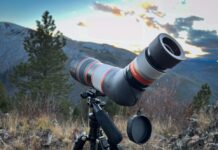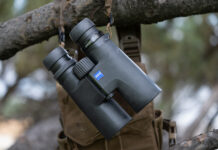Spotting Scopes (65 or 80MM)
Spotting scopes are often one of the most expensive pieces of equipment we as hunters buy. It’s not uncommon for the scopes to cost twice what our bow or rifle costs. Even a mid range spotting scope could buy you a very respectable rifle or bow given the same price.
So why are these expensive optics worth the trouble? Obviously they allow you to field judge animals from long distances to decide if the animal is worth the time, energy, and effort to pursue. Here in Alaska, antler/horn configurations not only hold trophy potential, but legality. For example, Dall sheep are required to be either 8 years old or full curl. In many places in the state, moose have to have a certain number of brow tines in order for them to be legal as well. Being able to judge these animals from a distance of 1-5 miles depending on conditions can save you day(s) hunting for something that might turn out to be sublegal.
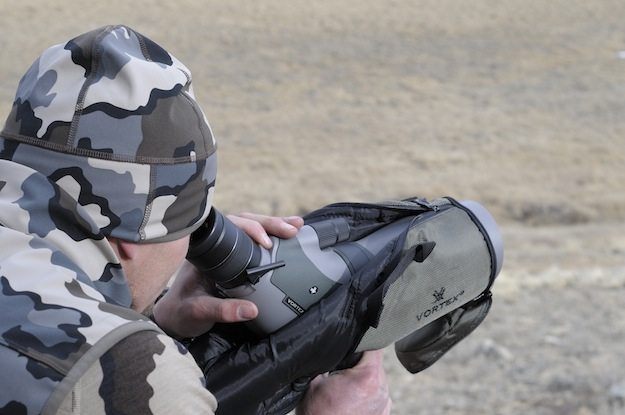
Spotting scopes comes in all sizes, shapes, and prices. In my experience, most spotters less than $400-$500 in price you’d be better served with just a quality pair of binoculars. The spotters in the $1K range are quite a bit brighter. Then of course there is Alpha glass (such as Swarovski, Zeiss, Leica) which are even that much better, but that comes at a cost.
In choosing which spotting scope will serve you best the first thing to do is decide which size and weight spotter best suits your hunting needs. For backcountry hunters that carry everything they need for a hunt in a backpack, space and weight are a premium. The three more common sizes of spotting scopes are 50mm, 65mm, and 80mm. These sizes reflect the diameter of that spotter’s objective lens. Generally speaking the larger the objective lens, the later in the day and earlier in the morning you’ll be able to use the spotter due to the larger objectives gathering more light.
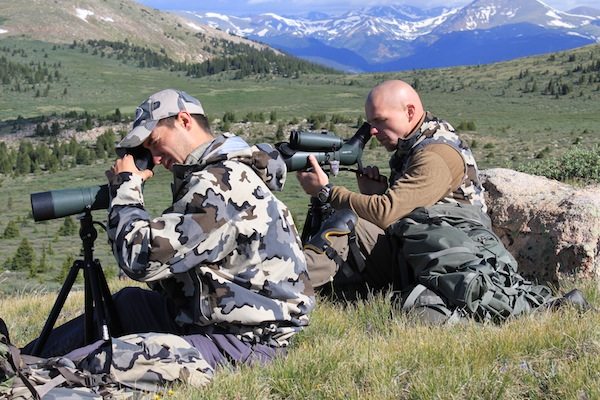
So why not just pick a 80mm or so objective and be done with it? It really depends on what and how you are hunting and what might best serve your needs. When hunting sheep and mountain goats, lots of hiking/climbing will be a given. Also these animals are not as nocturnal generally as deer, so a larger objective isn’t needed to take advantage of that first and last light, thus a spotting scope with a smaller objective may be sufficient. Being as a 80mm spotting scope weighs around 25% more than a 65mm scope from the same manufacturer, a smaller scope could make more sense to take up the mountain.
When hunting animals that are much more active at first and last light of the day, a scope with a 80mm or larger objective would be more of a priority. Another consideration is that many spotting scope manufacturers use the same eyepiece for both their 65mm class and 80mm class spotters, but with the idea that the 65mm spotter will be 15-45 power with the same eyepiece that the 80mm spotter would be 20-60 power. There are times, due to heat waves and wind, that you can actually see more definition of what you are looking at with the spotting scope set at a lower setting. However, having the option to dial up the power when conditions allow is a nice feature to have.
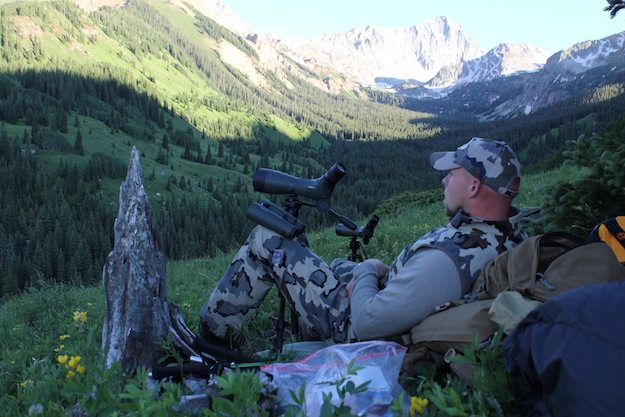
The 50mm objective size spotters are neat little spotters. The cost of these spotters is usually always less than $1,000 even for some of the best on the market. Also, they are often around half the weight of their 65mm counterparts. This size of spotter is excellent for summer scouting trips into an area to determine if it is worth coming back to this area once hunting season kicks off. These spotting scopes excel when you are just looking for overall quality of an area’s hunting potential, and you aren’t analyzing every tip and tine of each animal you see.
The small and light package these 50mm objective spotters provide makes it worth their trouble when you normally wouldn’t bring a spotter along, as you didn’t want to pack along a 3-4 pound spotter with tripod of similar weight to match. 50mm spotters often have less power to dial up to as anything above 40X would be not beneficial due to the smaller objective, so its not uncommon to see variable power eyepieces in the 15-30 power range. The 50mm objective size also works well for hunters that are not overly concerned with judging trophy potential at long ranges and are more concerned with spotter size and weight.
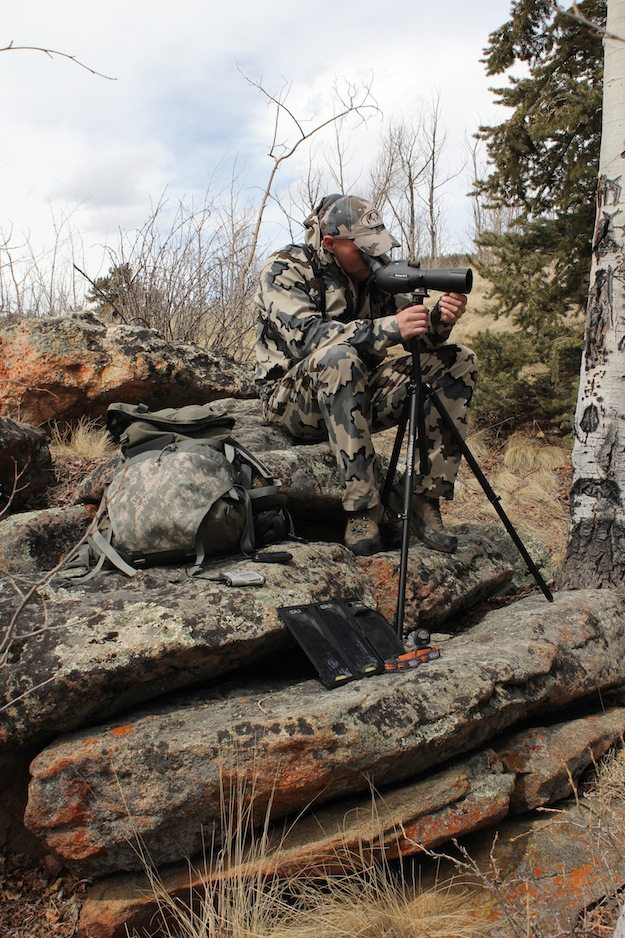
Like most things no one spotter does everything extremely well. 80mm spotters are great optics, but not so great for portability. 65mm spotting scopes have wonderful optics, but are not on par with the 80mm spotters of the same make during dusk and dawn, though they are more portable. 50mm spotters give up some optical clarity, zooming power, and light gathering ability, though they are an extremely portable spotting scope. Obviously most of us can’t afford one of each size of spotter, though I have been fortunate enough to own and use some from each objective class. It is paramount that those in the market to buy a spotter make their choice based on some simple guidelines. First, look at how and what you hunt the most, which will help you decide what size spotter class might best serve you. Once you have decided on which class of spotter you need you can better see which spotters fall into the price range that you are looking at. Everyone has slightly different needs so no one spotter is the end all be all. Also remember, even the best spotter is worthless with out a strong tripod to mount it on….but that’s another article.














